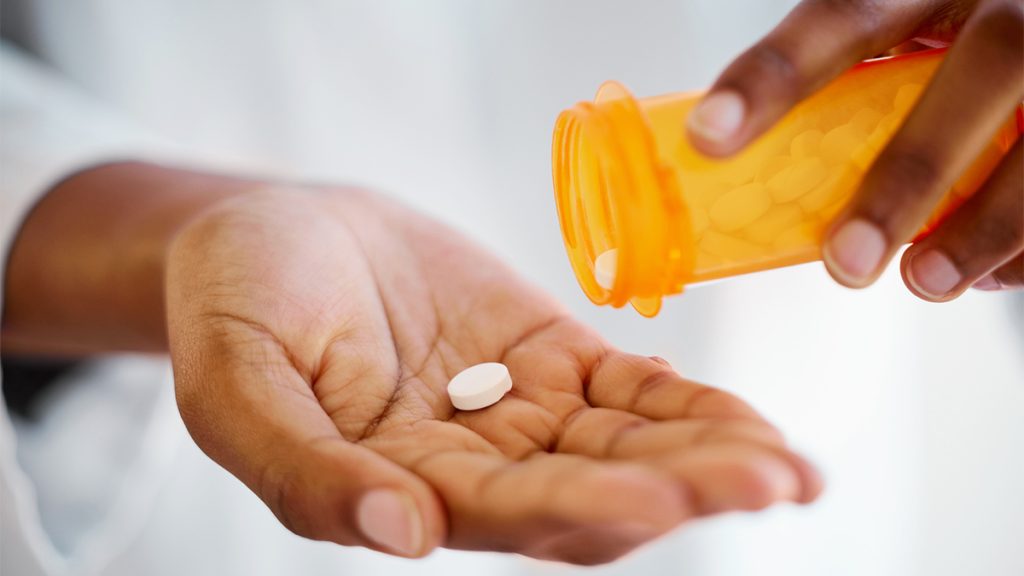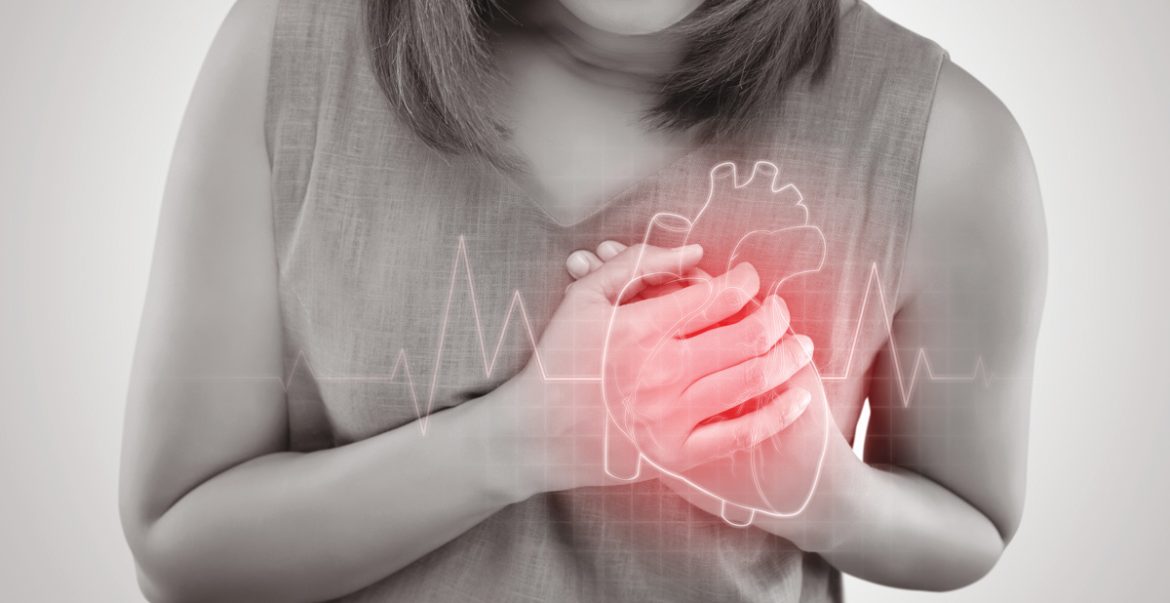STUDY/A stroke occurs when blood is blocked from reaching the brain or a blood vessel in the brain bursts. Stroke is the second-leading cause of death around the world, and its incidence increased substantially between 1990 and 2019 globally, including a 70% increase in the number of incidents, or first-ever, strokes.
Some studies suggest that higher estrogen levels may protect against stroke. Research shows, for example, that young women have a lower stroke risk than men, and that this risk after menopause, when estrogen production reduces.
Understanding more about stroke risk factors could improve preventative care and lead to improved treatment options.
Recently, researchers examined the link between lifetime cumulative estrogen exposure and stroke risk among postmenopausal women in China.
They found that women with the highest lifetime estrogen exposure had the lowest stroke risk.
The study appeared in Neurology.
What they did
For the study, researchers examined healthcare data from 122,939 postmenopausal women without prior stroke at baseline from the China Kadoorie Biobank study. Participants were aged between 40 and 79 years and were followed for an average of 8.9 years.
They were asked to provide information about their reproductive history, including the age of puberty onset, the age at which menopause started, and the number of pregnancies they had. They also provided information on their use of contraceptive pills.
The women were then split into four groups according to their reproductive lifespan (RL); or the number of years between puberty onset and menopause. Those in the shortest RL group had up to 31 reproductive years; whereas those in the longest RL group had 36 years or more.
The researchers also collected data on stroke incidence. During the study, they recorded 15,139 cases of new-onset stroke.
Researchers Conclusion
The researchers found that 13.2% of women in the longest RL group had a stroke; compared to 12.6% of women in the shortest RL group.
However, after adjusting for factors including smoking; age, and physical activity; they found that participants in the longest RL group had a 5% lower risk for all types of stroke than those in the shortest group.
In particular, when they looked at different stroke subtypes, they found that those in the longest RL group had a 13% lower risk for intracerebral hemorrhage compared to those in the shortest RL group.
Intracerebral hemorrhage is the most fatal kind of stroke which occurs when blood vessels burst in the brain.
Those with fewer stillbirths, miscarriages, and terminations were also less likely to develop stroke.
Estrogen and Stroke risk
“The link between reproductive lifespan, endogenous/ exogenous estrogens and risk of stroke in women is poorly understood,” Dr. Bharti Manwani, assistant professor of vascular neurology with McGovern Medical School at UTHealth Houston, not involved in the study, told Medical News Today.
“Preclinical studies have shown estrogen to be a profound neuroprotective agent, while clinical trials of estrogen replacement therapy in postmenopausal women failed to show benefit,” she noted.“
Dr. Alex Polyakov, associate professor, and gynecologist at the University of Melbourne in Australia, also not involved in the study, agreed that the exact mechanisms behind estrogen’s effects on stroke risk are not fully understood.
He added that: “Further research is needed to better understand the biological, behavioral, and social factors that may contribute to the link. Some potential mechanisms include the ability of estrogen to influence blood flow and the formation of blood clots, which can play a role in stroke risk.”
Study limitations
We asked study author Dr. Paige Song of the School of Public Health at Zhejiang University School of Medicine, Hangzhou, China, about the study’s limitations.
She told us that “some limitations of the study include potential recall bias in the collection of reproductive factor information, and the inability to control for other factors that may impact estrogen exposure and stroke risks, such as genetics, early life experiences, and diet.”
“The major limitation of this study is that estrogen exposure was measured indirectly rather than through direct blood levels,” Dr. Adi Iyer, a neurosurgeon and neuro-interventional surgeon at the Pacific Neuroscience Institute at Providence Saint John’s Health Center in Santa Monica, CA, not involved in the study, also told MNT.
Dr. Polyakov added as the study is observational, it can only establish a correlation and not causation. He further noted that the study was conducted only on Chinese patients, so its findings may not apply to people from other populations.
Implications
“The implications of this study for the future of women’s health are very intriguing, and more studies regarding the cerebrovascular protection value of a higher lifetime estrogen exposure are needed,” Dr. George B. Branning, a board-certified physician specializing in obstetrics and gynecology, from Biotech Medical Faculty, not involved in the study, told MNT.
“Although hormone replacement therapy [HRT] is usually suggested for patients who want relief of their symptoms such as hot flashes, night sweats, weight gain, and mood changes, studies have shown that HRT is essential to lifetime functional bone health, sexual health, and cognitive protection. These new study results indicate we can perhaps add stroke protection to this growing list of benefits,” he added.
Dr. Manwani agreed that it is essential to know that longer cumulative estrogen exposure decreases stroke risk in postmenopausal women. She noted, however, that age at puberty onset or menopause is beyond a woman’s control.

“Therefore, it is important for clinicians to risk-stratify women with decreased estrogen exposure/ lower reproductive lifespan and work on controlling/ treating their other modifiable vascular risk factors aggressively, for example, hypertension, hyperlipidemia, atrial fibrillation, diabetes mellitus, smoking,” she explained.
“[These findings] also open up another debate about the role of estrogen in stroke. Is it good or bad? More studies on estrogen replacement therapy are needed to identify if increasing the estrogen exposure by use of hormone therapy would be beneficial,” she concluded.
What are the symptoms of stroke in females?
The main symptoms of a stroke are the same across the sexes.
People can use the acronym BE FAST to remember the symptoms, which include:
- B — balance: Stroke can affect a person’s balance and coordination.
- E — eyes: Stroke can affect a person’s vision, resulting in sudden blurred vision, sudden double vision, and sudden loss of vision in one or both eyes.
- F — face drooping: If someone thinks that they or someone they know is having a stroke, they should look for signs of drooping in the face. When smiling, if one side of the face is drooping, it could be a sign of a stroke.
- A—arm weakness: People experiencing a stroke may be unable to hold their arms up above their heads due to weakness or numbness. If one arm drifts downward, it may be a sign that they are having a stroke.
- S — speech difficulties: People having a stroke are also likely to slur their words. Ask them to say a simple sentence; if they slur, it could be a stroke.
- T — time: If the above symptoms are present, it is time to call the emergency services.
People can also experience sudden numbness or weakness on one side of the body and a sudden, severe headache.
However, females may experience additional symptoms, such as general weakness that affects both sides of the body; fatigue, nausea, vomiting, disorientation, confusion, memory problems, etc.
Mini stroke symptoms
A mini-stroke or transient ischemic attack (TIA) is a warning sign that a person may experience a stroke.
According to the American Stroke Association; around one-third of people who have a mini-stroke go on to have a more severe stroke within 1 year.
These strokes typically only last a few minutes before the person experiencing it returns to normal; but can sometimes last several hours.
Symptoms may include; speech and visual disturbances, numbness or weakness in the face; weakness in the arms, weakness in the legs, and severe headache that appears to have no obvious cause.
People experiencing a mini-stroke should seek immediate medical attention; as this can be a warning sign that a full stroke may occur.
Even if the symptoms subside while a person is waiting for the ambulance; they should still be assessed by a medical professional.
Are there any warning signs of stroke?
It is more common for females to have vague or atypical symptoms of a stroke.
The symptoms of stroke in females may begin with fatigue, confusion; or general weakness that affects both sides of the body instead of one side.
The AHA notes that the signs of stroke in females can be subtle enough that they get missed, and many may explain away any stroke symptoms that they may experience.
They may ignore a sudden headache if they are prone to headaches; and they may disregard brain fog or general exhaustion as stress.
People should take note of any sudden changes they experience; or changes to body function that is not usual to them.
Source: Medical News Today


